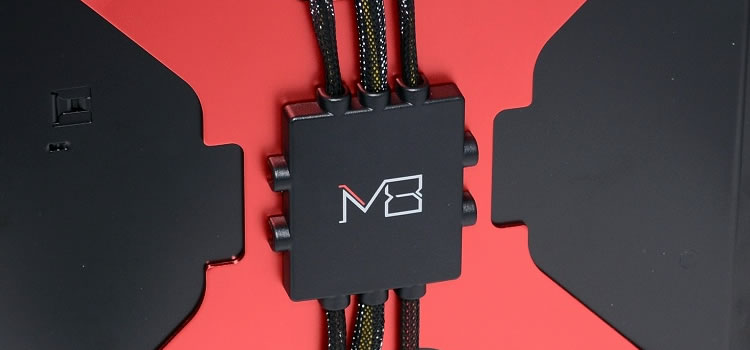Installation Impressions
For the first time in a while, I consulted the manual right away because I really had no idea where to begin. While the M8's SO-DIMM slots and CPU socket looked easy to access, I decided to leave them for last.
We started by removing the top rear aluminum arms and their connecting rods. In all, there are four large hex screws and two small Phillips head screws. The good news here is that Asrock has supplied all the tools required for the entire build.
With those parts removed the entire top lid slides out exposing the PCIe x16 riser card and a few mounts for 2.5" and 3.5" hard drives.
Having removed the drive mounts we began to work out how to install storage, which didn't take too long with some help from the manual. The primary plate can be used to install one 3.5" hard drive or two 2.5" drives.
However, be aware that if you want to install a 3.5" drive, the second drive plate (which supports three 2.5" drives) can't be used. So with a 3.5" drive installed, the only other 2.5" drive space is below the power supply next to the optical drive.
Getting to the tray that holds the optical drive and the spot for the 2.5" drive isn't easy, so it's not something you will want to do often. With most of the distances from the SATA drives to the SATA ports extremely short, Asrock has included a few shortened data cables to help keep everything neat.
Once all the hard drives were connected we installed an aftermarket CPU cooler and a graphics card.
Of note, the motherboard tray lacks a cutout so the motherboard needs to be removed from the M8. In the end, this didn't turn into a huge job, but make sure you get it right the first time as it's not a procedure you want to repeat. With the Thermaltake AXP-100 installed, it can be tricky getting cables such as the 4-pin CPU power cable back in.
We slotted a GTX 760 through the top of the case and fit snug in the steel expansion card holder. The hookup was complete after attaching two 8-pin PCIe power connectors.
To recap, we added a Core i5-4430 (3GHz quad-core) processor with the Thermalright AXP-100 cooler, a pair of Kingston DDR3-1600 4GB memory modules, a Palit GeForce GTX 760 JetStream, a Samsung SSD 840 Evo 1TB SSD and a WD Red 3TB hard drive.
That works out to a total system cost of $1,800 or $1,200 without the 1TB SSD, which isn't far off from what we achieved with our custom Silverstone SG10 build a few months ago.












